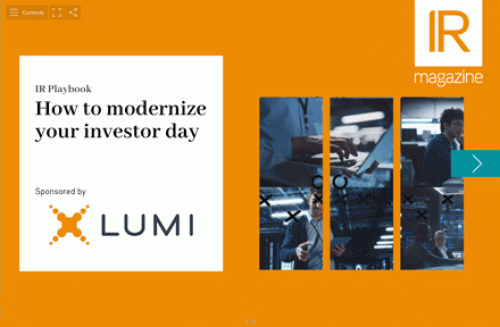BNY Mellon has found that geopolitical risk remains the dominant issue affecting overall global market confidence, according to a survey of IR professionals in its 2017 global trends in investor relations report.
Companies report that they are depending less on the sell side for key types of investor outreach, with the majority of companies now prioritizing the ability to pick their own target investors as a defining factor for their roadshows.
While the US continues to be perceived by most respondents as a source for investment opportunities, cited by 80 percent in 2017, this has decreased from 91 percent in 2015, the last time the report was published.
Over the same period, the number-two-ranked United Kingdom declined to 58 percent from 76 percent. This was followed by China at 26 percent, a decline from 50 percent in 2015; Singapore at 26 percent, down from 44 percent; and Hong Kong at 24 percent, down from 37 percent.
The role of an IR professional continues to evolve and increase in strategic importance, and the report also highlights major trends and issues in IR to help the issuer community best prepare for the future.
These include insights into gender equality in the IR profession based on the gender profile of survey respondents and how IR professionals are reacting to critical market developments, including the growth of passive and ESG investing.
Companies also noted that changing shareholder structure – for example, passive versus active investment – will be the top influence on the IR function over the next 10 years.
Additional key findings from the report include:
Gender equality:
- The gender profile of survey respondents: 29 percent of IROs surveyed were female and 71 percent were male
- Female IROs globally earn nearly one third (31 percent) less than their male counterparts (total mean salary and bonus)
- The salary gap was much greater in emerging markets, where male IROs earn almost two thirds or 65 percent more compared to female IROs
- The largest concentration of female IRO professionals was in the financials, consumer staples and healthcare sectors
- The largest concentration of male IRO professionals was in the technology, basic materials and telecommunications sectors.
Passive and ESG investing:
- As the significance of passive investing grows, almost one third or 32 percent of IROs reported communicating with this type of investor, with the focus being on governance issues
- Issuers reported the highest engagement with passive investors in North America at 35 percent, followed by Asia-Pacific at 29 percent, Latin America at 21 percent, Africa and the Middle East at 9 percent, and Europe at 7 percent
- In North America, nearly two thirds or 62 percent of respondents believe growth of passive investments will have the greatest impact on IR functions in the next 10 years
- As companies become more socially responsible, IROs are increasing outreach to ESG investors as potential new sources of investment, up 34 percent this year compared to 26 percent in 2013
- Asia-Pacific companies communicated and engaged with ESG investors the most at 48 percent, followed by North America at 16 percent, Latin America and Europe at 15 percent, and Africa and the Middle East at 6 percent.
‘IR professionals are responding to critical market developments such as the growth of passive investment and the headwinds affecting the global brokerage community by taking on more responsibility for market engagement themselves,’ says Christopher Kearns, CEO of BNY Mellon’s depositary receipts business, in a statement accompanying the report.
‘These developments stem from, among other things, regulatory reforms resulting from Mifid II, new global stewardship codes and the realities of the current market environment, which are in turn placing considerable new demands on investor relations teams globally.’
This is the 11th edition of the BNY Mellon IR survey, first published annually starting in 2004 and biennially starting in 2013. This year’s results, compared to the previous survey of 2015, illustrate an overall drop in focus on the top five traditional global financial centers as leading sources for new or increased investment in the next five years.










